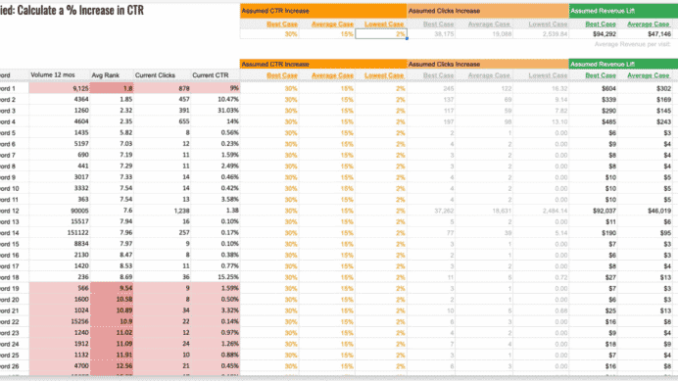
“I see clients, again and again, having to evaluate the value of making this [SEO] change over that change at the ticket level,” said Jessica Bowman, enterprise SEO consultant and author of Executive SEO Playbook, in her presentation at SMX Advanced.
While all SEO tasks are important for the success of your site, there’s a key distinction that should be drawn: those that have the potential to increase revenue, and those that are designed to prevent revenue decreases. SEOs who fail to differentiate these types of tasks often find themselves burnt out and unable to show how their work impacts the bottom line.
“What usually happens is SEO managers fall into this whirlpool of trying to build a positive revenue case for all of the tickets they have,” said Avinash Conda, director of organic growth at Williams Sonoma Inc., in the same presentation. “But that’s not something you need to be applying to all of the tickets.”
Marketers need to prioritize those tickets/tasks that will prove the most SEO value. But they must also choose which metrics should be reported.
According to Bowman and Conda, detailing click-through-rate (CTR) metrics for your brand’s target keywords is a simple yet effective way to prove your SEO efforts are worthwhile.
Get the daily newsletter search marketers rely on.
Processing…Please wait.
SUBSCRIBE
See terms.
function getCookie(cname) {
let name = cname + “=”;
let decodedCookie = decodeURIComponent(document.cookie);
let ca = decodedCookie.split(‘;’);
for(let i = 0; i <ca.length; i++) {
let c = ca[i];
while (c.charAt(0) == ‘ ‘) {
c = c.substring(1);
}
if (c.indexOf(name) == 0) {
return c.substring(name.length, c.length);
}
}
return “”;
}
document.getElementById(‘munchkinCookieInline’).value = getCookie(‘_mkto_trk’);
Data needed to measure SEO’s effect on CTR
To set up the template SEO impact on CTR, Conda suggested marketers first collect a list of specific URLs.
“This could be a subsection of the site, a folder on the site, or just a list of URLs which are impacting,” he said. “The second [step] is to get the list of keywords mapped to these URLs.”
This basic information will serve as the foundation for the formulas on the spreadsheet (see the template below).
Source: Jessica Bowman and Avinash Conda
To ensure your team gets the CTR metrics it needs, SEOs should also consider adding the following data from Google Search Console (past 12 months) for the URL/keyword combinations:
Total impressions.Average rank.Total clicks.Current CTR.
Once this data is added to the template, the formulas will help you calculate the increases in CTR and forecast fiscal-year growth from search. However, there are a few additional manual inputs marketers will need to include to ensure it functions correctly:
The list of URLs the SEO task will impact.The list of keyword(s) each URL is targeting.Assumed CTR increases based on high- and low-ranking keywords.The average revenue per visit.
Using the CTR template
Marketers can use a template like this to calculate assumed CTR, clicks and revenue increases. This is a great way to connect URLs/keywords to your organization’s bottom line, helping teams better predict the impact of these efforts.
Source: Jessica Bowman and Avinash Conda
However, as most search marketers probably know, not every aspect of SEO value can be measured in such a clear-cut fashion.
“There are a few tasks which cannot be quantified on a traffic level,” Conda said. “Site speed [tasks] are a good example … We know they are going to have a positive impact on traffic because site speed is a big ranking factor, but I don’t think we’re there yet in terms of coming up with [quantifiable] methodologies.”
Trying to forecast traffic using CTR in such a scenario might not be the most effective plan. In these cases, Conda recommends estimating SEO gains with conversion rates.
For instance, a Portent study found sites with 1-second load times had a conversion rate that was three times higher than sites that loaded in five seconds. Tying less quantifiable SEO tasks to important metrics like this can go a long way in proving their value.
Still, CTR is a solid metric SEOs can use to show the value of their work, especially if the data is made accessible using templates like Conda and Bowman’s.
“This model is a straightforward way to see the updates we are making, which we know for a fact will have a direct impact on rankings,” Conda said.
Watch Jessica Bowman and Avinash Conda’s full SMX Advanced presentation
Not registered for SMX Advanced? Get your free pass here.
Already registered for SMX Advanced? Log in here.
The post How to measure the value of SEO with CTR appeared first on Search Engine Land.
Source: Search Engine Land
Link: How to measure the value of SEO with CTR


